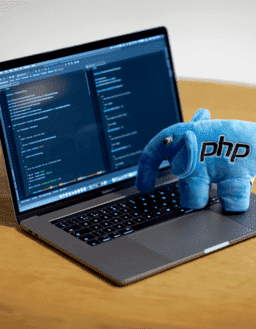
Outsourcing web and mobile app development is no longer just about trimming costs. For many U.S.-based businesses, it has become a strategic move aimed at accessing specialized skills, accelerating time-to-market, and focusing internal teams on core business functions. Whether you’re looking to hire web developers for a short-term project or partner with software development outsourcing companies for long-term collaboration, success depends on more than just deliverables; it depends on measurable, strategic alignment.
Businesses today are adopting a data-driven approach to working with software outsourcing companies, moving beyond transactional relationships to true partnerships. To ensure consistent value delivery, this approach requires a strong framework centered around clear metrics and accountability. Key performance indicators (KPIs) help not only in tracking project progress but also in evaluating the overall effectiveness of outsourcing software development services.
When properly implemented, KPIs serve as a compass, guiding project execution, identifying risks early, and strengthening the relationship between clients and outsourcing partners. This article explores the critical metrics that businesses should track, both at the operational and strategic levels, to ensure successful engagements with web development services and mobile app development services providers.
Foundational Metrics for Project Delivery
When working with web developers or app development services, foundational delivery metrics provide a real-time view into the health of the project. These indicators enable teams to assess whether timelines are being met, quality standards are upheld, and resources are being used efficiently.
Time and Schedule Management
Effective time management is vital when partnering with outsourcing software development companies. One of the primary metrics to monitor is Sprint Velocity, which tracks how much work a team completes in each iteration. A consistent velocity helps stakeholders forecast delivery timelines with greater accuracy.
Cycle Time measures the duration between when a task begins and when it is completed. A shorter cycle time reflects the outsourcing partner’s ability to work efficiently. Paired with Lead Time, which spans from task creation to delivery, businesses gain a full-picture view of responsiveness and execution.
The On-Time Delivery Rate is a straightforward but powerful KPI; it highlights the percentage of deliverables completed within their scheduled deadlines. Reliable delivery is essential when working with outsourcing app development partners, especially when product launches are tied to business objectives.
Code Quality and Technical Excellence
Quality matters just as much as timelines. Metrics like Bug Density (bugs per unit of code) offer insight into how stable and reliable the code is. Fewer bugs not only mean smoother user experiences but also lower maintenance costs post-deployment.
Code Quality Scores, derived from automated static analysis tools, evaluate complexity, maintainability, and readability. These metrics ensure that the codebase remains scalable, especially if you plan to extend it with staff augmentation services in the future.
Another vital quality metric is Test Coverage, the percentage of code verified through automated testing. Higher coverage typically correlates with fewer production issues. Lastly, the User Acceptance Testing (UAT) Pass Rate shows how well features meet stakeholder expectations, confirming alignment with the original requirements.
Financial Performance
Budget overruns can derail even the most promising project. Cost Variance measures the difference between the projected budget and actual expenses for each phase. A positive variance indicates efficiency, while a negative one signals issues requiring immediate attention.
Closely related is Burn Rate, which shows how quickly your budget is being consumed. Monitoring this metric helps you plan for scope adjustments or reallocate funds as needed. Equally important is Billing Accuracy. Double-checking that invoices match agreed-upon rates and hours ensures transparency when working with web development services or mobile app development services providers.
Metrics for Strategic Partnership and Business Impact
While delivery metrics focus on project execution, strategic KPIs evaluate the health of the relationship and the broader impact on your business. These are especially important when you choose to hire developers as an extension of your team or when entering long-term engagements with software outsourcing companies.
Communication and Collaboration
Strong communication is the backbone of successful outsourcing software development. Metrics such as Response Time track how quickly the external team replies to questions or requests. Faster response times often signal greater engagement and fewer bottlenecks.
Meeting Effectiveness is another valuable qualitative measure. Are your syncs productive? Do they drive action? Keeping these meetings outcome-focused is critical for maintaining momentum.
Equally important is the Feedback Loop Quality. This refers to how effectively the development team incorporates input from stakeholders. A team that adapts well to feedback is more likely to deliver a product aligned with business goals and user needs.
Business Value and User Experience
The ultimate test of any app is its performance in the hands of real users. User Engagement Metrics, like average session duration, bounce rates, and feature adoption, provide actionable insights into how users interact with your product post-launch.
Another critical indicator is Conversion Rate Improvement. If you’re working with app development services to introduce new features or redesign interfaces, these metrics show whether those efforts are driving desired actions such as sign-ups, purchases, or form completions.
Lastly, Customer Satisfaction Scores offer direct feedback from end-users. High satisfaction scores indicate that your partnership with software development outsourcing companies is yielding results that align with your brand and customer expectations.
Implementing a Metrics-Driven Management Strategy
To get the most from these KPIs, companies must move beyond passive tracking and implement a structured, metrics-driven management strategy. Here’s how to do it effectively.
Define Clear KPIs Upfront
Before engaging any web developers or mobile app development services, define what success looks like. Whether it’s reduced time-to-market, improved user retention, or lower cost-per-feature, these goals must be reflected in the KPIs you track.
Work with your outsourcing partner to set mutually agreed-upon benchmarks. This ensures alignment from day one and reduces the likelihood of miscommunication as the project evolves.
Leverage the Right Tools
Effective KPI tracking requires the right infrastructure. Platforms like Jira, Asana, or ClickUp help monitor tasks, sprints, and backlog items. Integrating automated testing frameworks and code quality tools enables continuous monitoring of deliverables.
Whether you’re working with outsourcing software development services for a small MVP or scaling with staff augmentation services, these tools keep performance visible and manageable.
Establish a Reporting and Reviewing Process
Set a regular cadence for performance reviews, weekly stand-ups for operational updates, monthly reviews for KPI trends, and quarterly strategic sessions to recalibrate goals.
Use these meetings not just to react to issues but to proactively explore improvements. If cycle times are increasing or UAT pass rates are dropping, these sessions provide the space to dig deeper and realign.
Conclusion
Choosing to hire developers or engage with software outsourcing companies is a decision rooted in trust. But trust doesn’t mean abandoning oversight. A structured, metrics-based approach ensures that expectations are met, quality is maintained, and your investment yields measurable business value.
By aligning your performance indicators with business goals, using the right tools, and fostering transparent communication, your engagement with web development services or mobile app development services can go from functional to strategic.
Ultimately, tracking KPIs is not about micromanaging your outsourcing partners; it’s about building accountability, increasing visibility, and ensuring mutual success.
Whether you’re scaling your digital presence, launching a new app, or improving existing platforms, choose your remote outsourcing software development partners wisely and manage them even more wisely.
Frequently Asked Questions
1) What is KPI in outsourcing?
KPI (Key Performance Indicator) in outsourcing refers to measurable values that track the success of an outsourced project or service.
2) How does Maxsource ensure project delivery quality?
Our developers leverage automated testing, code quality checks, and agile tracking tools. We also provide detailed reporting and review sessions, so clients always know where the project stands.
3) What KPIs should I track when I hire web developers or app developers?
Some of the most critical include on-time delivery rate, bug density, sprint velocity, and user acceptance testing (UAT) pass rate.















































